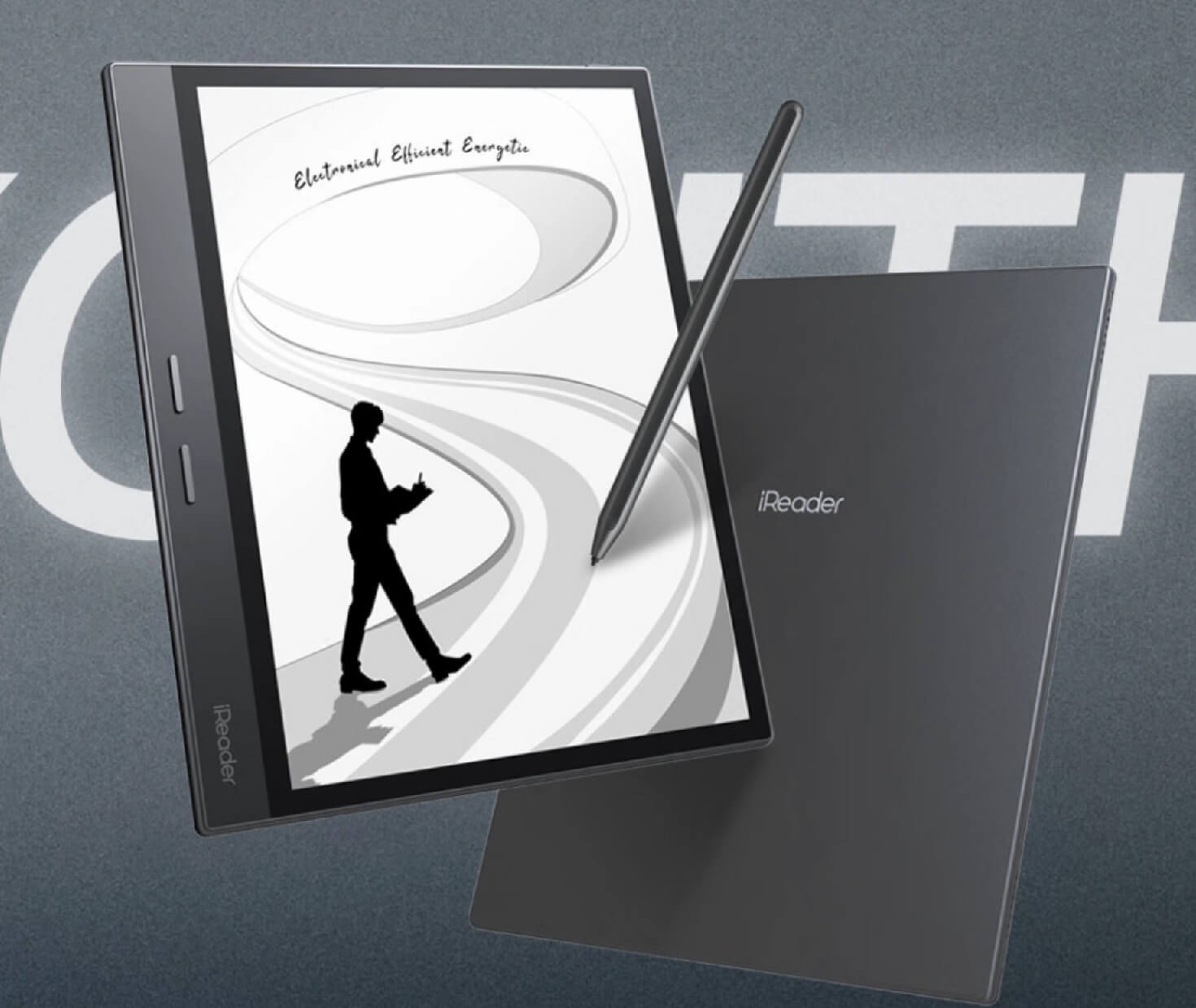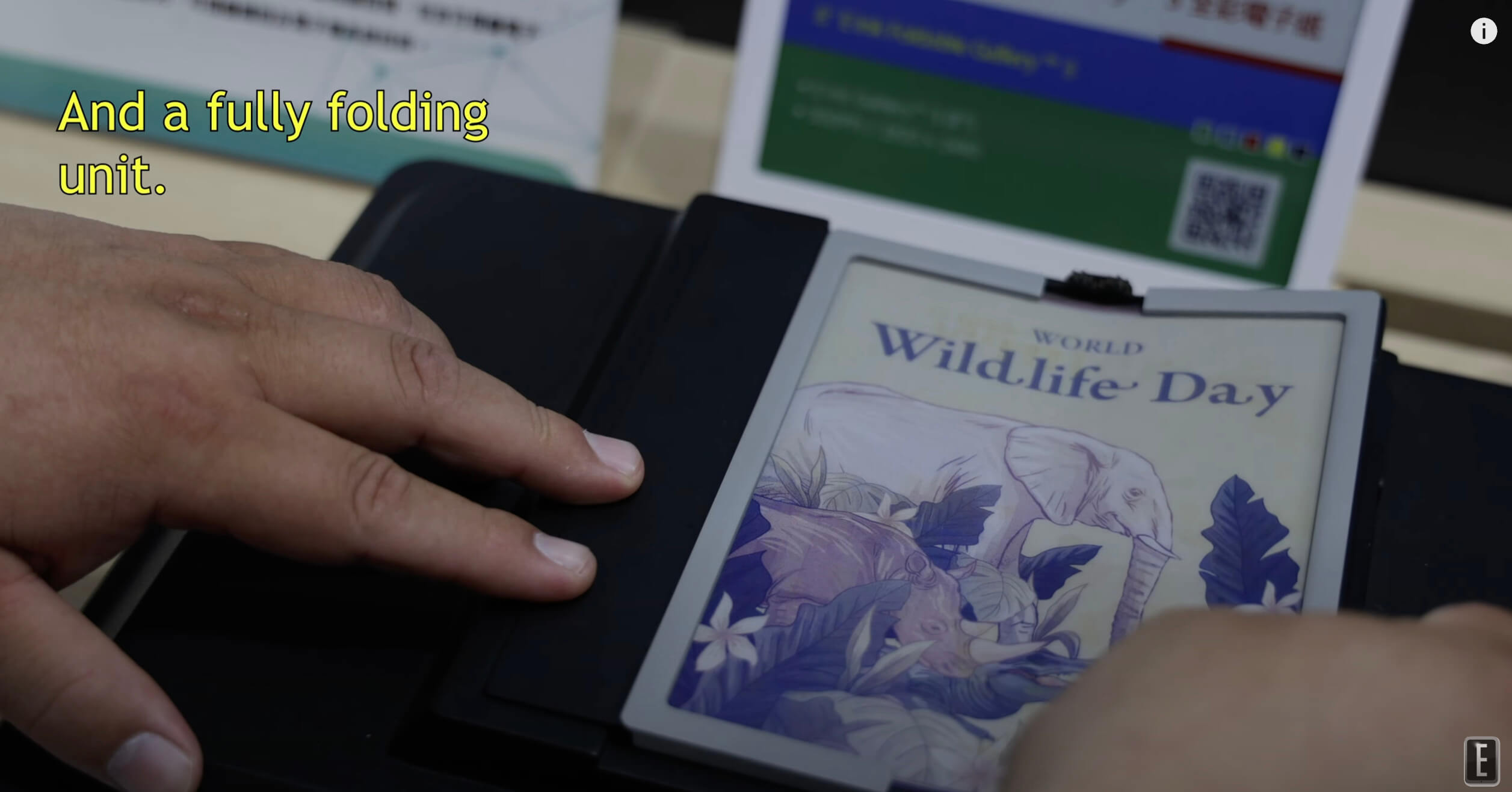Good e-Reader was at Touch Taiwan during the multi-day event. Plenty of new devices were shown for the first time to the public. Pocketbook showed off their next generation colour e-reader, the Pocketbook Inknote Color 2 with Kaleido 3. The exact specs of the device were not disclosed, likely because it was a prototype unit, but the colours looked perfect in terms of picture quality and overall resolution.
Sharp showed off the same Gallery 3 e-note they displayed a few months ago at a different event. The Sharp e-note currently does not have a name. But it will be using an 8-inch screen using Gallery 3 technology. What is most exciting about this new screen is that it employs Advanced Color E-Paper and can display over 50,000 different colours, which is achieved through a four-particle ink system: cyan, magenta, yellow and white, which allows a full-colour gamut at each pixel.
The company also had a flexible, rollable e-paper display panel. It employed Sharp indium gallium zinc oxide backplanes and an E INK Kaleido 3 colour filter array. The little sign only disclosed a little besides 300 PPI; the resolution will be 1920×1440. They were showcasing that rollable E INK was ready in terms of a prototype. It had no housing, but the future of a genuinely flexible e-paper might be available in 2024 or 2025.
Fujitsu was also at the event, at the E INK booth. They were excited about their third generation Fujitsu Quaderno will have an E INK Carta 1250 display panel. This is the same one that they employed on the second-generation model that came out in 2021. You get all of the advantages of Carta 1200, found on many of the most popular e-readers in the world, such as the Kindle Paperwhite and Kobo Sage, however with 1250, you get improved pen latency, so it is more responsive with freehand drawing, editing PDF files or taking notes.
The A4 features a 13.3-inch screen with a resolution of 2560×1920 with 240 PPI; this is a substantial visual upgrade from the second-generation model, which had a resolution of 1650 by 2200 with 227 PPI. One of the big selling points is this is the first large-screen display to use Kaleido 3. This new e-paper supports 4096 different colours, and there is a broader colour gamut and 30% better saturation. However, there is a drawback with this new screen; the colour PPI is only 80. This is attributed to the fundamental way that Kaleido 3 handles PPI differently. It takes the overall black and white PPI and cuts it by 1/3, which is what the colour PPI will be. There is no front-lit display on this model. However, it uses a WACOM layer and will come with a new stylus. You will also be able to bring in your stylus.
Readmoo was at a booth with their latest generation Mooink Plus 2C, an upcoming e-reader that should be shipping to customers in a few months. Philips had their monitor, with a large LCD on one side and a 13.3-inch E INK B&W panel on the right side. They took pre-orders but removed them from their online properties, likely due to the e-paper shortage.
The show’s star was an almost commercial-ready foldable E INK display with Gallery 3 colour e-paper. Standing on the table, it looked like a typical colour e-reader but opened and closed like an actual book. It was foldable, with no fancy hinge system but a flexible e-paper screen. There was a flash when you opened it, likely due to the state being changed; since it looked it when it was folded, it put the e-reader into sleep mode, and when it was opened, it woke it up.
Michael Kozlowski is the editor-in-chief at Good e-Reader and has written about audiobooks and e-readers for the past fifteen years. Newspapers and websites such as the CBC, CNET, Engadget, Huffington Post and the New York Times have picked up his articles. He Lives in Vancouver, British Columbia, Canada.

